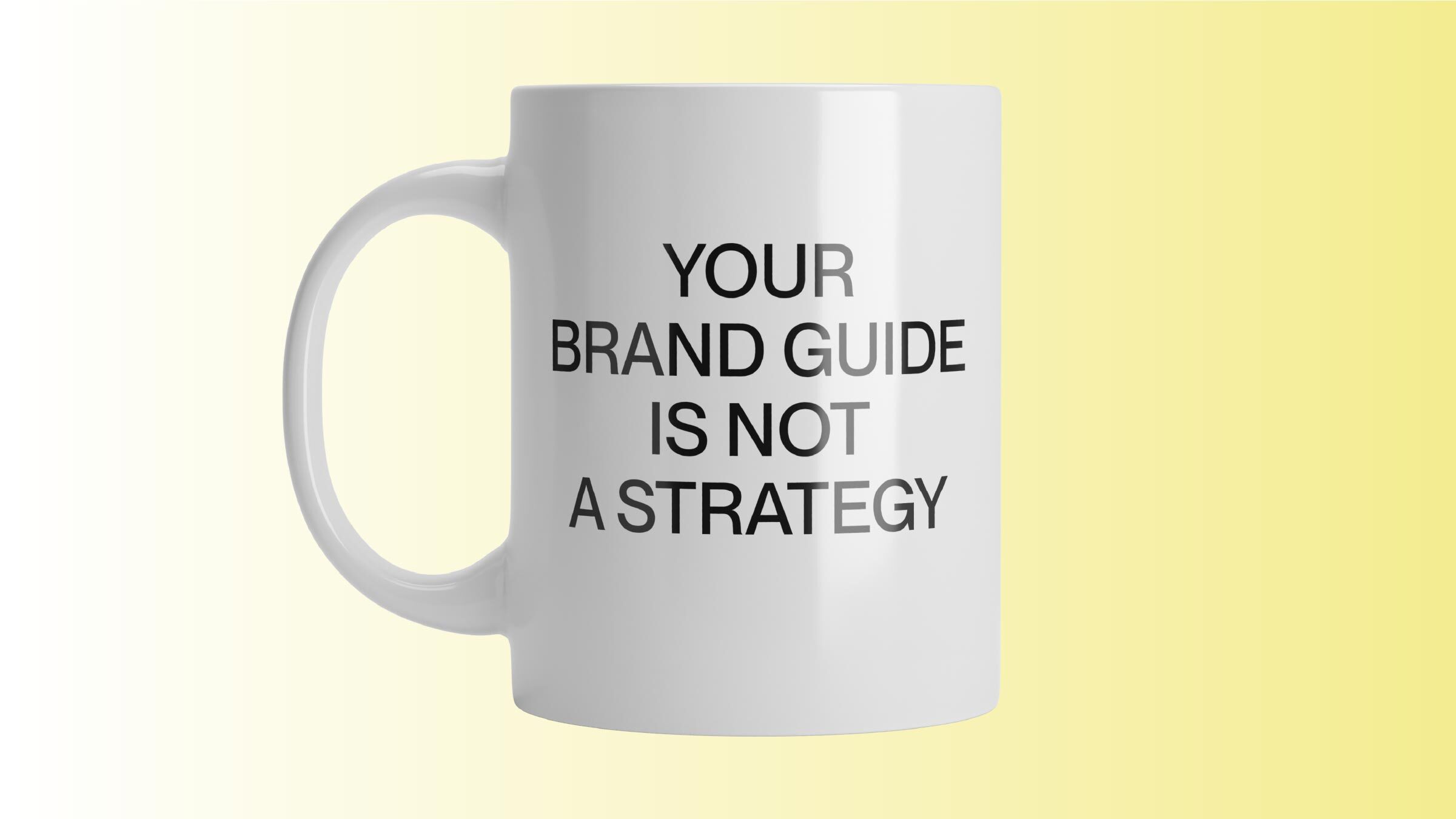
Your brand isn’t static IP. It’s dynamic — living in every decision, product, post, and pitch your team puts into the world.
That’s why the traditional brand guide — as we’ve known them — no longer gets the job done. It’s frozen. It’s siloed. And it’s disconnected from how organizations actually operate — especially those moving quickly, scaling fast, and working across teams and borders.
Leaders in tech, health, education, and social impact across Canada are realizing the same thing: if you want your brand to be more than a coat of paint, you don’t need more rules. You need a system.
From Brand Book to Brand Operating System
A brand operating system (or Brand OS) is more than a guide. It’s a strategic framework designed to help teams apply, adapt, and extend their brand in real-world contexts. It’s how a brand shows up in product decisions, hiring practices, marketing campaigns, partner pitches, and everyday interactions.
A Brand OS doesn’t replace strategy. It is strategy in action.
Where a brand guide might prescribe “what the logo should look like,” a Brand OS focuses on what the brand stands for, how it behaves, and how to bring it to life — consistently and creatively — in different contexts.
It’s a system of alignment, not just instruction.
Why the Brand OS Matters Now
As Canadian organizations pursue ambitious growth — at home and on the global stage — the risks of misalignment multiply. New hires, new markets, new platforms, new priorities. In that complexity, brand coherence becomes both more difficult and more valuable.
A Brand OS helps teams:
- Act faster with more confidence
- Scale their brand without diluting it
- Foster creativity without creating chaos
- Keep internal and external teams aligned
The result? Not just consistency — but momentum.
What It Looks Like
At Pilot, we’ve worked with organizations across sectors grappling with the limits of traditional brand guidelines — and those experiences helped shape our Brand OS approach.
A national health brand came to us struggling with fragmentation: siloed teams, inconsistent messaging, and a brand that felt more like a sticker than a system. We built foundational strategy and storytelling tools to help them align — and saw how much further they could go if those tools were operationalized more deeply.
A fast-scaling Canadian tech company needed to grow without losing its voice. We developed positioning, tone, and design systems that helped unify product, marketing, and HR. But it became clear that without shared decision frameworks, they’d continue to rely on brand stewards to enforce consistency — instead of enabling teams to act with confidence.
These and other engagements revealed the same truth: a static brand guide isn’t enough. To scale well — and move fast without losing yourself — you need a system. One that lives across teams, channels, and decisions.
The Anatomy of a Brand OS
There’s no one-size-fits-all model. But most effective Brand OS builds share four core components:
- Core beliefs and behaviours – What the brand values, how it speaks, and how it acts in the world.
- Flexible systems – Modular messaging and visual assets that scale across functions and platforms.
- Decision-making tools – Clear principles and filters for real-time choices across design, product, marketing, and operations.
- Live examples – A growing set of templates, references, and use cases that show the brand in motion — not just theory, but practice.
What started for us as brand strategy and design work has evolved into something more operational. We now think of a Brand OS as the connective tissue between strategy and execution — and we’re building it with ambitious Canadian organizations who want to move with more clarity, creativity, and speed.
Strategy in Motion
A Brand OS isn’t about rigid consistency. It’s about strategic clarity and operational flexibility. It ensures everyone — from your CMO to your newest hire — knows what the brand stands for and how to bring it to life in their work.
Because a brand isn’t a set of assets. It’s a shared way of seeing, deciding, and doing. And the companies with the clearest systems win — not just because they look better, but because they move better.
Pilot is a Canadian strategy and design agency focused on helping organizations compete more clearly and connect more deeply. We partner with organizations navigating complex change or market friction — helping them find alignment, momentum, and better days.